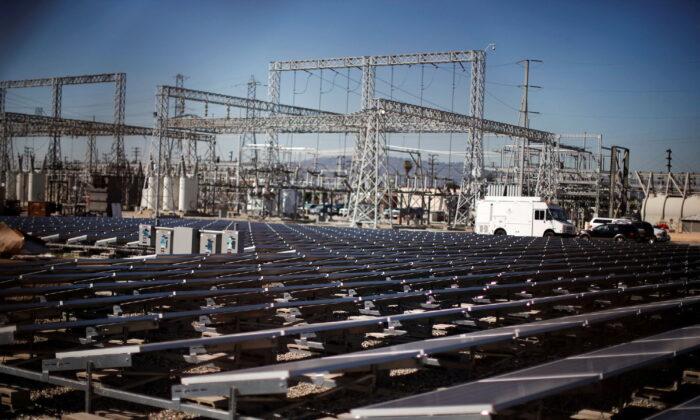The installation of wind and solar power projects is slowing down in the United States, with some projects being canceled over persistent cost issues and community animosity.
“The low installation figures are the result of previous project delays and continued supply chain constraints,” the report said.
“No other third quarter saw lower wind capacity additions since at least 2015. The 4,500 MW of new wind capacity added in the first three quarters of 2022 is less than half of that added by the end of 2021’s third quarter, 9,223 MW,” the report states.
High costs are said to be one of the reasons for canceling some of the renewable energy projects. For instance, the Midcontinent Independent System Operator (MISO) canceled around 245 renewable energy projects in the four years between January 2016 and July 2020 which had reached advanced stages of development.
Community Opposition, China Slave Labor
Wind and solar projects are also facing increasing opposition from local communities. The Renewable Rejection Database shows that 79 local governments in the United States either restricted or banned solar power projects in 2022, up from 19 in 2021 and just two in 2020.Much of the rejections between 2017 and 2022 happened last year, with 106 projects being rejected during this period in total.
Rural communities in states like Ohio, Michigan, and New York have blocked solar and wind projects over concerns about how these initiatives will affect property values and neighborhoods, according to IER. In Ohio, over 40 townships prohibited the construction of such large renewable energy projects last year.
While some experts expect more electricity to come from renewables in the future, they foresee great challenges before getting to such a position.
A ban on certain imports from China also had a negative effect on the implementation of renewable energy projects.
“Solar panel imports, 80 percent of which come from China and Asia, have slowed following U.S. legislation aimed at labor abuses in China with several thousand shipping containers of solar panels being detained by U.S. Customs near ports such as Los Angeles,” according to IER.
A 2022 report by the United Nations’ International Labor Organization stated that China has implemented a “widespread and systematic” program of using Uyghurs and other Muslim minorities as forced labor for industrial and agricultural activities in the Xinjiang region.
Biden Green Energy Push, Wind Power Challenges
The Biden administration has been promoting the transition to green energy power. The Inflation Reduction Act, signed into law by Biden in August last year, contains provisions promoting renewable energy.In the last three months of 2022, over $40 billion in solar, wind, and battery projects were announced, according to the American Clean Power Association. This is roughly equivalent to the total investment in such renewable projects in 2021.
In Rhode Island, for example, utility regulators are weighing suspending Mayflower Wind Energy’s application to set up transmission cables for the first part of a proposed wind-power project off Massachusetts. The project costs $5 billion, and questions are being raised about its financial viability.
Offshore wind power projects are also facing environmental opposition. Recently, Rep. Jeff Van Drew (R-N.J.) demanded an end to offshore wind activity in New Jersey after an “unprecedented” number of whales washed ashore in the region during recent weeks.





